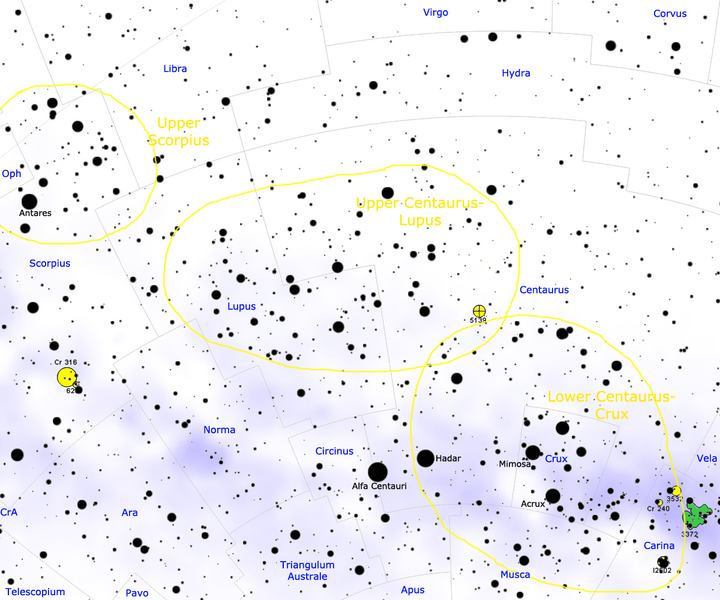BDanielMayfield wrote:
This leads to 2 questions: (1) How big will the blast be when Zeta Oph pops off? Or equivallently, what percentage of it’s mass will be converted into energy? (2) How far away from the Earth will this star be in 4 milion years?
Good questions. I have no idea how far away it will be from the Earth in 4 million years. As to how intrinsically bright the supernova explosion will be, there are a few things to keep in mind. First of all, it will be a supernova type II explosion, a core-collapse supernova. In all probability, the supernova explosion will not give rise to a black hole, which means that the core of the star will become a neutron star, with a probable mass of a bit more than 1.4 solar masses.
So how much of Zeta Ophiuchi's mass will be converted into energy? Today the star probably contains about 20 solar masses. Perhaps 1.5 solar masses will go into making a neutron star. Does that mean that the other 18.5 solar masses will be converted into energy?
No, that will not happen. It is almost certain that Zeta Ophiuchi will lose a lot of mass through a strong stellar wind before it goes supernova. There is some evidence, or at least some suggestion, that very massive stars often don't make extremely bright supernovae, because they lose so much mass through their own stellar wind before they pop. An example of a star which has really "lost weight" is the Wolf-Rayet component of Gamma Velorum. Jim Kaler wrote about this star:
The windy WR star probably started with somewhere around 40 solar masses and has now stripped itself down by an unknown amount, perhaps to under 10.
Zeta Ophiuchi will almost certainly not lose three quarters of its own mass before it explodes, but it will certainly lose mass. How much mass it loses and how much it retains will determine how bright it will become when it explodes.
An interesting example of a mass-loss star that went supernova is the progenitor of Supernova 1987A. Before this supernova exploded in the Large Magellanic Cloud, it was a truism among astronomers that only red supergiant stars exploded as supernovae. But because the LMC is so nearby, the progenitor of the supernova had been photographed and classified before it popped and could be identified as a blue supergiant of spectral class B3. However, it was soon understood that the star, Sanduleak -69° 202, had previously been a red supergiant and had turned blue by shedding a lot of mass and shrinking. This meant that even though the core of Sanduleak -69° 202 was ripe for an explosion, the star as a whole was underweight. Therefore the explosion was unusually faint.
http://en.wikipedia.org/wiki/SN_1987A wrote:
It is of note that the supernova of the blue giant Sanduleak -69° 202 was about
one-tenth as luminous as the average observed type II supernova, which is associated with the denser makeup of the star
So it is anybody's guess, actually, how bright the Zeta Ophiuchi supernova will be when it explodes.
Ann
 Zeta Oph: Runaway Star
Zeta Oph: Runaway Star




